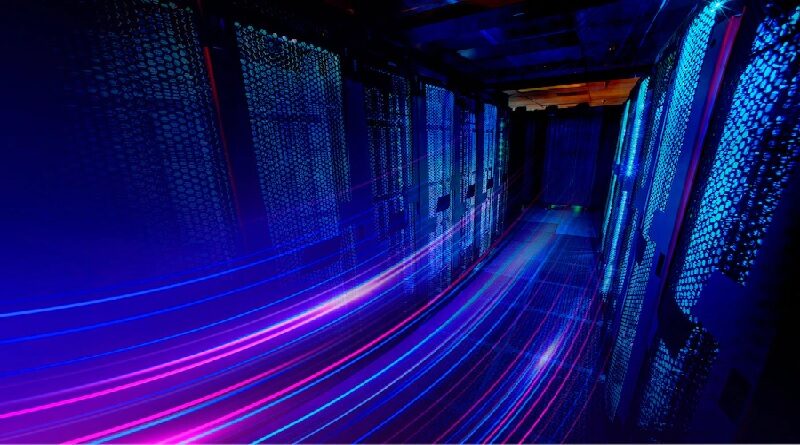Future Data Centre Design Will Differ In Three Ways
Since their inception, data centres have undergone constant evolution, with the demands of each technological era defining each stage of transition.
Due to the sudden transition to digital caused by the COVID pandemic, we are currently producing more data than ever. Naturally, there has been an exponential rise in the need for data management, archiving, and processing. Future data centre construction will face a new set of difficulties and considerations as a result of this increased demand.
How can we meet our expanding data need without endangering the environment? How can we protect our data from the escalating cybersecurity threat? These are just a few of the things that data centre operators will need to think about in the future.
In order to learn more about these issues and what the future holds for data centres, TNW met with Uwe Erlenwein, Head of Data Center Construction at cloud provider IONOS.
Sustainability must come first in all design decisions.
Data centres are becoming necessary to support our increasingly tech-dependent lifestyles. However, given that climate change is the biggest and most serious global threat facing society, the high energy requirements of data centres have come under scrutiny, bringing with them new rules as well as innovative technology.
Soon, taking into account the climate will be a requirement for all data centres. The process of getting building plans approved is getting increasingly difficult because it requires a detailed evaluation of the sustainability aspects of the proposed structure.
For instance, Frankfurt demands that data centres have a green exterior and occupy less land before granting planning authorization. This concept has been implemented by IONOS in its newest data centre in Worcester, UK. The ancillary buildings, substation, and bicycle shelter are just a few of the areas on the site with green roofs. Additionally, there are environmental protection areas with bug and bee hotels throughout the business park to support the local animals and natural environment.
Operators and trade associations are being urged by recent initiatives like the Climate Neutral Data Centre Pact to go above environmental goals and make their facilities carbon neutral by 2030. Future building materials that are less carbon-intensive will become more and more crucial, along with incorporating nature into a site’s design.
Uwe tells us that at the Worcester Six Business Park, “the carbon required to construct the exterior of the building was totally offset by the manufacturer. We’re looking into carbon-reduced or entirely carbon-neutral concrete and steel for the future; this was just the beginning.
Efficiency is increased by using the best location and procedure.
The choice of where to site a data centre will grow more difficult as the world becomes more congested and space becomes scarcer. There are a number of considerations that must be made before building starts.
Taking into account where your consumers are is essential; a low latency is necessary for increased speed, performance, and efficiency. According to Uwe, “we wanted to be in the region around Birmingham because it’s more or less the median point for most of our customers” when determining where to put IONOS’ new data centre. You pretty much have the same latency to Manchester as you do to London.
The availability of fibre and power also influences the choice. The land developer that IONOS purchased the property from in Worcester Six Business Park was also hired to construct the powered shell. Both parties placed a high value on being energy conscious and having access to the correct kind of power.
Photovoltaic (PV) panels that cover the entire roof produce up to 10% of our overall energy needs. The rest of the energy is supplied by the grid, and we only buy solar, wind, or hydroelectric energy that is 100 percent green, according to Uwe. In the future, data centres all around the world will frequently and absolutely require this shift towards renewable energy procurement.
Natural elements like weather patterns and topography have an impact on decisions because of increased environmental accountability demands as well as rising global temperatures. Power consumption effectiveness (PUE) has been a priority for us from the start. At Worcester, our design PUE is 1.25,” Uwe tells us.
Cooling systems are still required, even in cooler climates. To adjust its chillers to the outside temperature, IONOS uses free air cooling. Compressors continue to create chilled water after this temperature has been attained, further cooling the location.
Data centres are frequently threatened by overheating and power outages when a component breaks. In order to avoid this, the new Worcester data centre was built to a Tier IV standard and has redundant capacity parts and active distribution pathways that are also segregated to provide concurrent maintainability and fault tolerance. Additionally, it includes on-site generators with limitless runtime, ensuring that power is always accessible.
Since IONOS powers these generators with hydrated vegetable oil (HVO), the carbon footprint is reduced by around 90%. It also has an automated valve control system and a buffer tank continuous cooling system.
More improvements are being developed in the sector to raise cooling system and backup generator efficiency levels. Uwe shares his wisdom with us:
Although direct-to-chip liquid cooling is getting more and more popular, the majority of users still use air cooling. Another technique is immersion cooling, in which your IT components are immersed in the liquid.
Some manufacturers are also considering adopting hydrogen fuel cells to power generators in the future, even if the market is not there now due to a lack of storage capacity. It might represent an innovation for the sector because it is environmentally friendly and fully emission-free.
The key is increased surveillance and security.
In addition to the need for greater efficiency, security issues are still a concern for data centres around the world. CCTV cameras, motion detectors, an intrusion alarm system, and fire and smoke detection are all used by IONOS to keep an eye on the physical location.
Data centres must improve their digital security mechanisms as hackers continue to become more skilled. Virtualization and remote access are rising trends, but many businesses, including IONOS, are wary of embracing them.
“Due to specific dangers, we do not control the data centre infrastructure or anything else on the site remotely or offer any control to the cloud. Anyone could remotely manipulate a data centre infrastructure if you are hacked. Remote operation carries a significantly larger risk of operational failures than onsite operation, according to Uwe.
The capacity to implement sophisticated algorithms that monitor the health condition of the various components in the background will be crucial for predictive maintenance in the future.
What to anticipate going forward
According to Uwe, manufacturers of data centre infrastructure equipment are increasingly including built-in AI capabilities that can track and assess health status. Automating this procedure will increase real-time monitoring’s precision and give operators a continuous overview of the location.
As the need for more data centres grows, the efficiency of existing centres must continue to advance. In the future, we’ll start to see them start to use less energy and space. Additionally, as digital security measures advance, more virtualization and cloud migration will occur.




